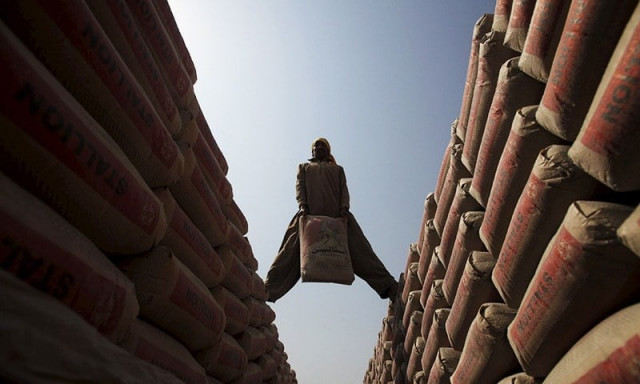Following remittances, Pakistan's exports also fall
First quarter saw 9% decline in country’s exports, 29% rise in trade deficit

PHOTO: REUTERS
Exports fell 9% from July through September compared to the same period of last year, reported the Pakistan Bureau of Statistics (PBS) on Friday.
Remittances fall 9.3% in September
Compared to this, imports surged 10.7% to $11.7 billion in the same period. Resultantly, Pakistan posted $7.1-billion trade deficit in the first quarter, which was $1.6 billion or 29.2% more than the deficit in the corresponding period of last year.
The deficit was also $1.8 billion more than what the International Monetary Fund (IMF) had projected for the quarter, as there was a wide gap between the IMF’s estimates of exports and imports and the actual trade performance.
“We do see a decline in exports going forward due to appreciation of the Real Effective Exchange Rate, security and governance challenges and power outages,” said Harold Finger, IMF Mission Chief to Pakistan, on Thursday. The continuous decline in exports is worrying when seen in the backdrop of other developments in the external account.

Remittances dropped to $4.7 billion in the first quarter, down 5.3% from the same period of the preceding year.
Saudi Arabia remains largest source of remittances for Pakistan
Receipts from exports slipped to $4.68 billion in the Jul-Sept quarter, which was 9% or $462 million less than the receipts in the same period of previous year. The receipts were $641 million less than the IMF estimate.
Imports, however, recorded a growth of 10.7% as payments stood at $11.7 billion, which was $1.14 billion more than the payments made in Jul-Sept last year.
There was almost 7% contraction in exports in September alone as goods fetched $1.54 billion.
Owing to the falling remittances and exports - the two important sources of foreign exchange - coupled with shrinking foreign direct investment (FDI), the government has resorted to dollar borrowing to build its foreign currency reserves, which is not sustainable.
Ironically, Finance Minister Ishaq Dar on Friday congratulated Prime Minister Nawaz Sharif after the reserves rose to $24.5 billion on the back of $1-billion Sukuk borrowing.
Just a day earlier, the IMF said the reserves may have increased, but had not reached “comfortable levels”.
Businessmen worried as exports fall rapidly
The IMF’s last report on the $6.4-billion bailout programme revealed that Pakistan’s gross external financing needs would reach $10.9 billion in 2016-17. Since the trade deficit stood $1.8 billion higher than the IMF’s estimate, the financing requirement is also likely to go up accordingly.
The IMF report stated that in the medium term Pakistan’s external debt repayment capacity was strong. However, under an extreme stress scenario in which downside risks simultaneously materialise, the external debt would rise over the medium term and external financing would peak at 8% of GDP, above the medium vulnerability risk benchmark, noted the report.
The extreme scenario is based on the assumptions of lower remittances, higher profit repatriation, a sharp decline in FDI and equity portfolio inflows, higher external financing costs and lower medium-term growth.
The IMF also projected a significant rise in imports due to the China-Pakistan Economic Corridor (CPEC). It estimated that CPEC imports would comprise 11% of total imports in the years ahead.
In the previous fiscal year, the exports fell to an eight-year low at $20.8 billion despite preferential access to European markets. Exports have been declining since the current government took over, falling from $24.5 billion in 2012-13. For 2016-17, the government has projected exports will grow to $24.75 billion and imports will rise to $45.2 billion.
Monthly data
The trade deficit in September widened one-third to $2.3 billion over the same month of previous year. Exports fell 10.6% in the month, while imports increased 11.5%.
Published in The Express Tribune, October 15th, 2016.
Like Business on Facebook, follow @TribuneBiz on Twitter to stay informed and join in the conversation.


















COMMENTS
Comments are moderated and generally will be posted if they are on-topic and not abusive.
For more information, please see our Comments FAQ